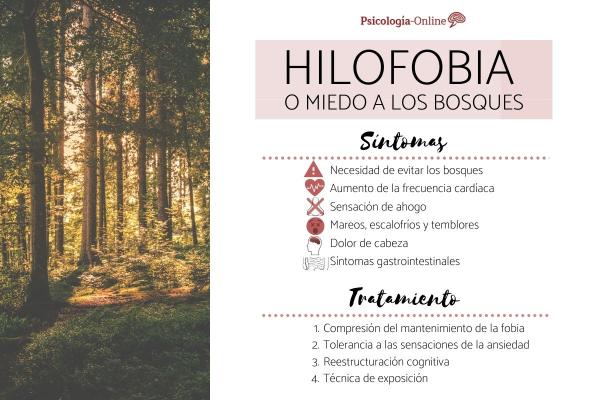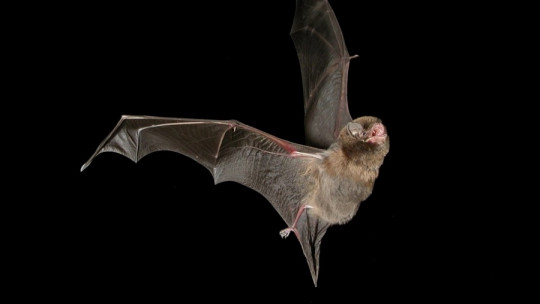
Fear is an emotion that allows us to survive through learned mechanisms for survival during our phylogenetic evolution. Fear allows us to flee, fight, or even paralyze ourselves in the face of a significant threat to our life, therefore, we know that it is an indispensable emotion and recognition per se will allow a healthy expression of it.
Phobias are recognized as intense and disproportionate fears of certain objects, situations or environments; Phobias therefore represent that pathological expression of fear since they produce disability and significant clinical deterioration in the lives of people who suffer from it. In this PsychologyFor article, we share with you a particularly important topic due to its clinical presentation: fear of forests or hylophobia and its symptoms, causes and treatment
What is a phobia of forests called?
The pathological fear of forests, that is, a fear that incapacitates the person who expresses it when approached or at the mere suggestion of approaching it, constitutes one of the various existing phobias: hylophobia.
The phobia of forests is called hylophobia and often occurs concurrently with xylophobia, the pathological or disproportionate fear of wood.
What does hylophobia mean?
Hylophobia is a pathological fear of forests, that is, a fear that incapacitates the person when faced with the phobic stimulus (forests). Continuing the line about fear as a natural or normal emotion in human beings, forest phobia produces a cognitive, physiological and behavioral reaction that does not match what is expected.
People with hylophobia generally manifest a avoidant behavior towards phobic stimuli which are forests or any representation of it.
Symptoms of fear of forests
Below we share with you what are the characteristic symptoms of fear of forests, that beyond the aforementioned fear there are others:
Intense anxiety or physiological response/panic attack
The most common physiological symptoms of anxiety and panic attacks are the following:
- Cries.
- Staying paralyzed.
- Chest pain.
- Excessive sweating.
- Mydriasis (pupil dilation).
- Difficulty breathing.
- Motor restlessness.
- Dizziness
- Headache.
- Shaking chills.
- Tremors.
- Nausea or abdominal discomfort.
- Paresthesias (numbness or tingling sensation).
Anticipatory response
People with hylophobia usually experience greater physiological activation when they anticipate or are exposed to an object related to their phobic stimulus (forests). When they pass near a forest or places surrounded by them, subjects show mild or intense physiological activation.
The level of fear experienced may vary with the proximity of forests, objects or related situations and may occur in anticipation of fear or in the actual presence of forests.
Cognitive symptoms
- Thought of losing control or going crazy.
- Thoughts come to die.
- Catastrophe thoughts about what may happen in the forest.
Avoidance behaviors
Avoidance of forests or stimuli related to this phobic stimulus. Active avoidance means that the subject presents behaviors intentionally aimed at preventing or minimizing contact with forests or related situations.
Some subjects with hylophobia suffer for many years and change their life circumstances based on the need to avoid forests as much as possible (for example, moving to an area where there are no forests or green areas).
Causes of fear of forests
There are forests that can represent or portend a considerable amount of danger when entering them, and it becomes much more understandable than if the approach to these places occurs at night.
traumatic experience
The majority of specific phobias have an origin in a traumatic experience (for example, if in childhood one was lost in a forest, being attacked by an animal would cause a representation of the forest as a habitat for the aggressor, even indirectly from having lived in places near forests when one was chronically traumatized by family members or neighbors can develop this phobia).
Environmental
Even knowledge of fictional stories or stories told by someone else about terrifying events in a forest can be a quite probable cause of this phobia.
biological causes
Phobias can also be caused by a neurochemical alteration: A brain structure called the “amygdala” can influence the control of the fear response. People who have this hyperactive structure may have an exacerbated fear response, which causes increased anxiety in situations involving the danger that forests represent.
Treatment of fear of forests
The systematic desensitization It is a technique developed by J.Wolpe to reduce anxiety reactions and is especially effective in the treatment of phobias.
Systematic desensitization consists of asking the subject, while relaxed (to do so, they will have previously trained in relaxation), to imagine several scenes that each provoke a greater reaction than the previous one (related to forests). The repeated presentation in imagination, while the subject is relaxed, of the phobic stimuli, produces the gradual weakening and elimination of anxiety responses.
Relaxation allows the subject to be in contact for enough time (even if only in imagination) with the phobic stimulus for the reaction to take place. fear extinction.
It is not essential to perform this technique, but it facilitates the subject’s permanence in the face of the feared stimulus. Because reduces your discomfort and makes the flight response less likely. Therefore, systematic desensitization is a gradual and prolonged exposure with prevention of the escape response.
This article is merely informative, at PsychologyFor we do not have the power to make a diagnosis or recommend a treatment. We invite you to go to a psychologist to treat your particular case.
If you want to read more articles similar to Fear of forests or hylophobia: symptoms, causes and treatment we recommend that you enter our Clinical Psychology category.
Bibliography
- American Psychiatric Association. (2013). Diagnostic and Statistical Manual of Mental Disorders (DSM 5). Panamericana Publishing








